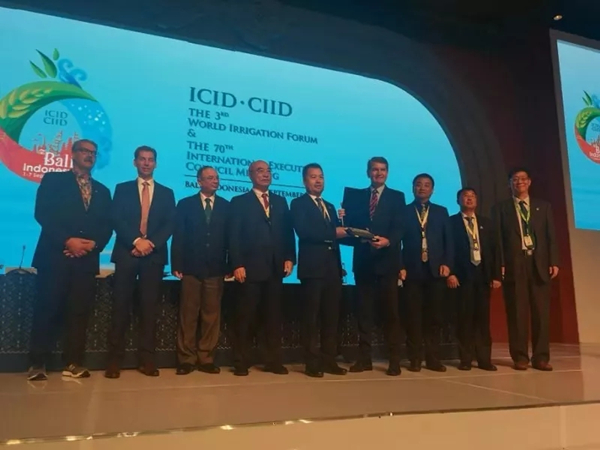Inner Mongolia irrigation structure included in ICID register
Updated: 2019-09-04  Print
Print 




Hetao irrigation district, an irrigation district in North China's Inner Mongolia autonomous region, is inducted into the register of the International Commission on Irrigation and Drainage register of World Heritage Irrigation Structures (WHIS) at the 70th International Executive Council Meeting of ICID held in Bali, Indonesia on Sept 4. [Photo/WeChat account of Inner Mongolia Daily]
Hetao irrigation district, an irrigation district in North China's Inner Mongolia autonomous region, was inducted into the register of the International Commission on Irrigation and Drainage register of World Heritage Irrigation Structures (WHIS) at the 70th International Executive Council Meeting of ICID held in Bali, Indonesia on Sept 4.
Hetao irrigation district, with an irrigation area of 10.2 million mu (680,000 hectares), is one of the oldest large irrigation areas in China. It has a history of more than 2,000 years.
The irrigation structure has stood for thousands of years and operates to this day. After the founding of the People's Republic of China, renovations were carried out in the irrigation area and it now forms a complete seven-level irrigation and drainage support system.
The irrigation structure has a sustainable planning concept and sustainable management techniques, and its scientific, technological, and historical value has important practical significance for the modernization of irrigation. It is because of this that the irrigation structure was included in the ICID register of WHIS.
ICID was established in 1950 and is a leading scientific, technical, and international non-governmental organization. ICID is a professional network of experts from across the world that engages in irrigation, drainage, and flood management. Its main mission is to promote sustainable agriculture water management in order to build a water-secure world free of poverty and hunger through sustainable rural development.





 Ordos Impression
Ordos Impression Ordos WeChat
Ordos WeChat Ordos Reported
Ordos Reported


